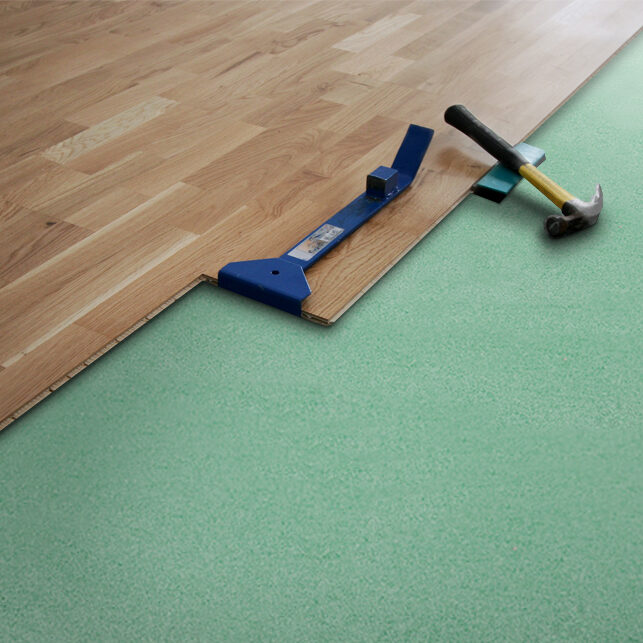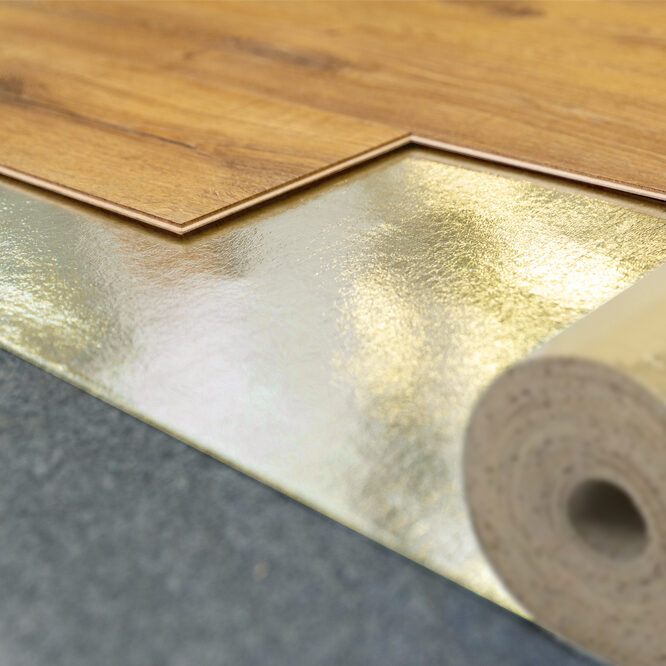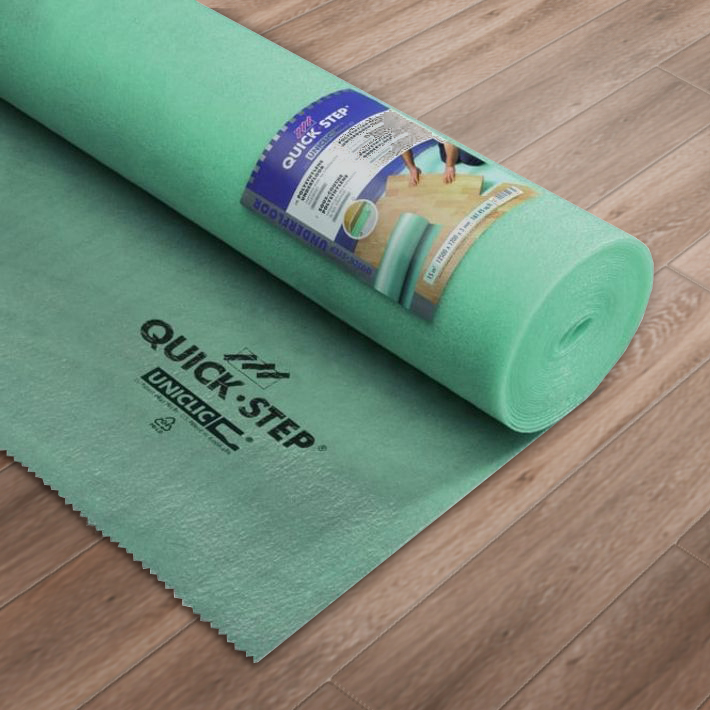You probably never thought that what was underneath your floor mattered as much as the floor itself, did you?
Well, life is full of surprises.
Floor underlays are like the foundations of a house, the fitted sheet before a duvet, or the cake beneath the icing. In other words: even if it doesn’t look pretty, the final product isn’t complete without it. Your flooring installation needs an underlay to fulfil its potential. So now that we’re on the same page, why not let us give you a hand?
Chances are, you’ve arrived at this guide because you have no clue where to begin when you need to buy underlay for your flooring installation. If that’s the case, don’t worry. In this underlay guide, we’ll teach you all about it – what underlay is, the types of underlay, how long it lasts and more.
Let’s begin.
Table of Contents
What is underlay?
Underlays are a protective layer designed to sit beneath flooring or carpet. There are a range of underlays available, and they generally work to enhance comfort with additional depth and improve the lifespan of your floor by up to 50%. While reducing pressure on joints and acting as a shock absorber, they also minimise wearing, add insulation for reduced heat loss and offer increased noise reduction.
How do I know what underlay I need?
While many underlays strive to provide the same benefits, this doesn’t mean they are well-equipped for all applications. The kind of underlay you need depends on your subfloor and the flooring laid.
For carpets, your underlay should be soft and high in comfort for a kinder feeling underfoot. As for hardwood flooring, underlays should make good moisture barriers to prevent any damage post-installation. There are a select few types of flooring that may not require any underlay or with an underlay built-in, so it’s always best to check with the manufacturer for guidance.
You should always take into account your subfloor. Concrete subfloors require a moisture barrier to prevent damage to your flooring, while timber subfloors won’t need it unless they exceed normal levels of moisture (10-13%MC).

Types of underlay
There is a vast range of underlays suitable for hard flooring, so you might find it a little confusing. Here we’ll list some options so that next time you need to pick a hard floor underlay, you’ll find it easier than before.
Fibreboard
Fibreboard underlays work to smooth out floors that are unlevel. They help to minimise noise and provide excellent thermal insulation, making them ideal for wood and laminate flooring
Luxury Vinyl Tile Underlay
Luxury vinyl tile underlays often have top sides that are tacky to prevent the vinyl flooring from moving or slipping. If you’re laying your luxury vinyl tiles over an underfloor heating system, LVT underlays are fully compatible. Able to reduce noise by as much as 30%, they prevent noise transfer to the rooms below.
Expanded Polyethylene
Equipped with a built-in damp-proof membrane (DPM) for concrete subfloors, Expanded Polyethylene (EPE) underlays are made from lightweight, semi-rigid and flexible closed-cell foam. They provide both impact and shock absorption, helping to dampen vibration and keep surfaces well-protected. They are compatible with a range of solid wood, engineered wood and laminate flooring, as well as underfloor heating systems.
Timbertech
Perfect for use with wood and laminate flooring in heavy domestic and light commercial applications, Timbertech is a robust and heavy-duty underlay made from highly dense synthetic rubber. While including a built-in moisture barrier, it offers fantastic insulation and lowers up to 30% of noise in a room. It can be installed easily and resists compression, keeping wood and laminate floors from straining so that joints remain intact when subject to high foot traffic areas.
Timbershield
With its highly dense, heavy-duty synthetic rubber structure and fleece backing, Timbershield is perfect for both wooden and laminate floors. When floors are prone to flexing, Timbershield provides additional support.
Stepshield
Stepshield makes a fantastic moisture barrier and disguises minor subfloor irregularities, reducing costs and time during installation. Best suited to laminate flooring, it also offers slight sound-dampening qualities.
Other notable underlay options for wood and laminate flooring include Built-in Damp-Proof Membrane (DPM) underlays, Eco-Friendly Underlays and Underfloor Heating underlays. You can also get self-adhesive underlays that work brilliantly for solid wood flooring and it saves you time and hassle during installation.

Underlay TOG rating
If you’re wondering what a TOG – Thermal Overall Grade – rating is, it is a unit of measurement that refers to the thermal insulation of a textile product according to thickness, density and structure. When it comes to underlays, different TOG ratings will suit different applications. Hard floors benefit from a lower TOG rating of 1.0 while carpets suit higher TOG ratings from 2.5 to 4.0.
If your home includes a conventional heating system, underlays with higher TOG ratings are recommended. These ratings offer better insulation and avoid heat loss. For underfloor heating, however, the best underlay will have a lower rating, somewhere between 0.35 and 2.5 TOG. Underfloor heating systems require heat to pass through the floor and into the room, in which case high thermal resistance won’t be compatible.
How long does underlay last?
Depending on footfall, traffic and wear, underlays are expected to last anywhere up to 25 years. It’s important to recognise that this prediction is based on the ideal scenario, so don’t be surprised if your underlay doesn’t quite make it this far in a busy home.
You’ll be able to tell when your underlay needs replacing when it starts to lose support or begins to form bumps. This can be hard to tell under a hard floor, so you might have to lift your flooring to check. There’ll be visible damage in the form of rips and fraying, and it can even start to hold onto odours and produce mildew.

Final Thoughts
In the world of flooring, the unsung hero is the underlay.
Providing noise reduction, thermal insulation and more, it’s essential for your floors. With an array of materials and features to choose from, this handy guide has covered the basics and revealed the secrets to selecting the perfect underlay for your space.
When you head off on your search to buy underlay, bear in mind that a good one will always provide a solid foundation, defend your floor from wear, and add value and comfort to your home.










